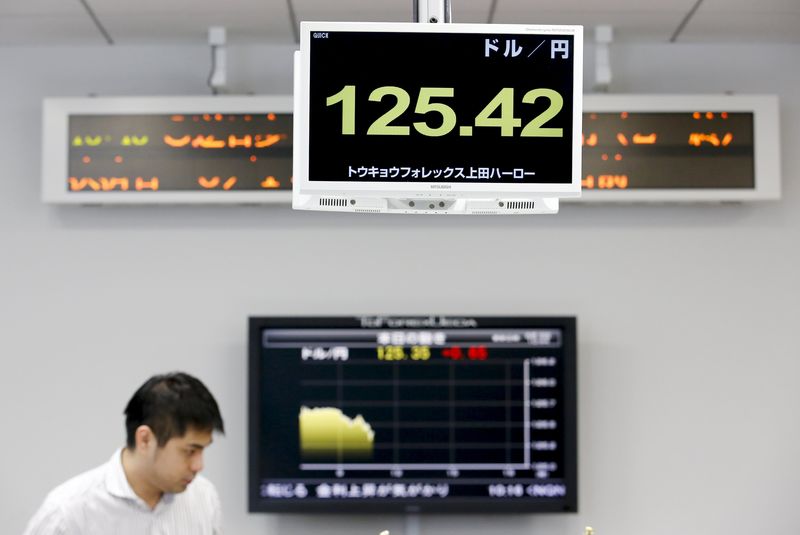(Repeats froom Thursday without changes)
By Anirban Nag
LONDON, May 5 (Reuters) - The dominance of financial centres
such as London, New York and Tokyo in the $5 trillion-a-day
global currency market may face challenges from landlocked
cities as new technology erodes the advantage offered by
high-speed undersea cables.
A European Central Bank research paper says these three
centres, along with Singapore and Hong Kong, dominate the
industry in part because of the history of submarine cables that
have made high-frequency trading possible.
But, it says, new fibre optic networks that can also carry
data at very high speed are being laid and which could influence
the geography of the 24-hour, five-days-a-week currency market.
The location of foreign exchange hubs has implications for
big trading firms and job creation as well as the prestige of
the cities or countries in question.
There is also a political and policy edge to it now since
the ECB has insisted all clearing and settlement of
international euro currency trading must be conducted within the
European Union - even if the world's biggest forex centre London
were to find itself outside the bloc if Britain voted to leave
the EU.
Were that to happen, the major centre for euro trade within
the EU would probably be Frankfurt, the ECB's headquarters.
A 2013 survey of the FX market by the Bank for International
Settlements showed that while the United Kingdom, the United
States and Singapore expanded their share over the past decade,
trading activity in Germany and Switzerland shrank. Between
them, Germany and Switzerland account for just under 5 percent
of global foreign exchange trade.
The ECB paper, however, says recently installed cables
connecting landlocked cities have the potential to lure back
high-frequency traders, who contribute about a third of trading.
It cited Spread Networks' cable between the data centres of
the Chicago Mercantile Exchange and NASDAQ in New Jersey and
euNetworks' fibre network route between Frankfurt and Zurich, a
major centre for trade in the Swiss franc, the world's fifth
most traded currency.
"Landlocked or not, there may be hope for Zurich after all,"
the paper concludes.
Toby Williams, head of euNetworks' ultra-low latency
product, said there had already been a rise in high-frequency
trading in foreign exchange but added the key driver was
liquidity.
TRANS-ATLANTIC CABLE
The first trans-Atlantic telegraph line was completed in the
mid-1800s and was used to transmit the exchange rate between the
dollar and the British pound. That gave rise to the trader slang
for the currency pair - "Cable".
Sub-marine cable laying gathered pace in the late 1980s.
Over time, their use for electronic trading of currencies and
other financial instruments picked up.
But trading currencies needs more infrastructure.
Electronic trading platforms, such as those run by EBS and
Thomson Reuters, on which most high-speed currency trading takes
place, have to invest in expensive servers. High-speed trading
firms prefer to be physically close to the servers to reduce
transmission time.
The combination of high-speed cable connections and matching
servers accounted for the growing weight of London and New York,
said Barry Eichengreen, professor of economics at University of
California, Berkeley, and co-author of the ECB paper.
Some veteran traders such as Alan Clarke who is global FX
product manager at BBVA (MC:BBVA), say not all currency traders require
access to the fastest technology.
"Aside from high-frequency types, non-speculative, real
money flow isn't as sensitive to micro-second latency," he said.
Nonetheless, Brad Bailey, director at research and advisory
firm Celent, which focuses on the impact of technology on
financial services, said it was likely new cables would be a
factor allowing other cities to gain market share.
"I expect over the next decade to see a change in the
balance of where the FX centres are globally," he said.
<^^^^^^^^^^^^^^^^^^^^^^^^^^^^^^^^^^^^^^^^^^^^^^^^^^^^^^^^^^^
Link to ECB research paper https://www.ecb.europa.eu/pub/pdf/scpwps/ecbwp1889.en.pdf?54b5eca53e131791d7456680db420145
Geographical disttribution of global FX market http://tmsnrt.rs/1NYRVri
^^^^^^^^^^^^^^^^^^^^^^^^^^^^^^^^^^^^^^^^^^^^^^^^^^^^^^^^^^^>
(Editing by Nigel Stephenson/Jeremy Gaunt)
